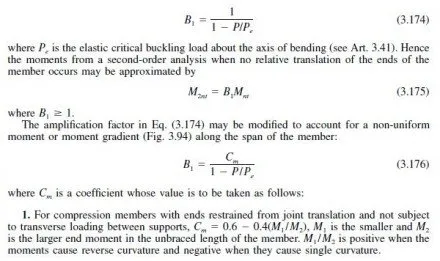Many designers believe that steel girders, because of their lower weight per foot, should have longer spans than concrete beams for a bridge at the same location. This is not necessarily the case. The AISC has conducted studies that show that there are substantial economies for the steel alternative when the spans are kept the same, including the cost of extra substructure units. However, as with any preliminary study, site-specific considerations may indicate otherwise. For example, where the foundation or substructure costs, or both, are extremely high, it is probable that longer steel girders, with fewer substructure units, would be more cost-effective than shorter spans.
Deflection of steel bridges has always been important in design. If a bridge is too flexible, the public often complains about bridge vibrations, especially if sidewalks are present. There is also a concern that bridge vibrations may accelerate fatigue damage or cause premature deck deterioration. In an attempt to satisfy all these concerns, the AASHTO standard specifications include limitations on deflection and depth-span ratios as a means of ensuring sufficient stiffness of bridge members (Art. 11.3.1).
There is some doubt about the need for these limitations, especially relative to the potential for increased deck cracking. Many studies indicate flexibility of the superstructure is not a cause of increased deck cracking. The AISC notes that most European countries do not have live-load deflection limits in their design specifications.
The AASHTO LRFD specifications require that deflections be checked as part of the service limit state and include in the Commentary the statement: Service limit states are intended to allow the bridge to perform acceptably for its service life. . . . Bridges should be designed to avoid undesirable structural or psychological effects from their deflection and vibrations. While no specific deflection, depth, or frequency limitations are specified herein, except for orthotropic decks, any large deviation from past successful practice regarding slenderness and deflections should be cause for review of the design to determine that it will perform adequately. The LRFD specifications provide optional criteria for deflections that are essentially the same as those in the standard specifications. These provisions apply to all structures, not just steel, as was the case in the past. The LRFD specifications also require checking I-section members for permanent deflections.



